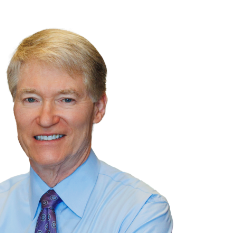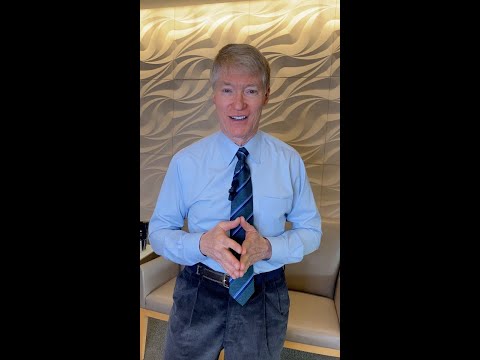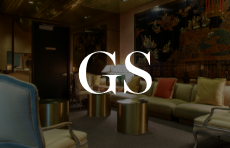For many, the recovery process following rhinoplasty is an anxious time, as patients are eager to get a first look at their new nose. But since this procedure is often complex, the healing process can often take a year, depending on several factors, including the amount of reconstruction, surgical techniques used, patient’s individual speed of healing, and more.
However, there is a general rhinoplasty recovery timeline you can refer to for a better idea of what your recovery and results timeline may look like. Dr. Sanders has put together a helpful timeline detailing what you can expect at every stage in your recovery process, including when you can expect to see the final results of your rhinoplasty.
What to Expect After a Rhinoplasty
While the rhinoplasty recovery process is different for each patient, here is a general timeline of what you can expect following your procedure.
Week One
The first week following rhinoplasty is typically the most difficult, as there may be significant swelling, tenderness, and discomfort. Some patients also experience bruising during this period.
Furthermore, with nasal bandages, a splint, and sutures, you may not be able to breathe or smell through the nose. The splint is an essential part of your rhinoplasty recovery; it protects and supports your nose as it settles into its new shape.
Within five to seven days following the surgery, your plastic surgeon will remove the bandages, splint, and sutures. Depending on your unique rhinoplasty, you will see partial results of the procedure once these are removed.
However, it is important to keep in mind that the nose will likely still be very swollen, and these are not the final results. Your nose shape and size will continue to change in the months following your rhinoplasty.
Since patients wear nasal bandages and a splint the first week following a rhinoplasty, as well as experience discomfort, Dr. Sanders recommends taking this time off of work. It is important to prioritize resting and recovering during this period, so the nose optimally heals.
Week Two
The second week is generally much easier than the first week, with many patients feeling comfortable enough to return to work and resume their normal activities, given they are not too strenuous.
By day ten, you may see a significant reduction in swelling. Though you might still have some bruising, this can be easily covered with makeup.
Three to Six Weeks After Surgery
In the three to six weeks following your surgery, swelling will continue to gradually subside, and you should begin to see a hint of your final rhinoplasty results. Additionally, during this period of your rhinoplasty recovery, any signs of having recently undergone major surgery should disappear, including any bruising or significant swelling.
Furthermore, at some point during this period of recovery, it is safe to resume all activities, including any vigorous exercise, like running. Consult your plastic surgeon for a more personalized recommendation on whether or not you are ready for strenuous activities.
Two to Four Months After Surgery
In the months following your rhinoplasty procedure, your nose will continue to settle into its new shape and size. Though the changes might be imperceptible, your nose will become more defined as time goes on.
While you will have likely resumed all of your normal activities and exercises at this stage, it is still important to completely avoid any contact sports. Your nose is likely still vulnerable, and the results may be compromised if you are accidentally struck in the face.
Six Months After Surgery
At this point, swelling should have significantly subsided, though the nose is continuing to heal and settle. For many patients, their plastic surgeon will clear them for contact sports at the six-month mark in their rhinoplasty recovery.
One Year After Surgery
For those wondering how long it takes to see the final results of rhinoplasty, you can expect to see your new nose—completely healed inside and out—around the one-year mark after surgery, give or take a couple of months.
For most individuals, it can take at least this long for the skin to accommodate the new underlying framework or bridge structure, and up to three years if you have had an extensive amount of work done on the nasal tip.
After one year of recovering, Dr. Sanders finds that almost all of his rhinoplasty patients are immensely satisfied with the look and feel of their new noses. You can see why in these before and after rhinoplasty photos.
Rhinoplasty Recovery Tips
There are a few things you can do to facilitate healing and optimize your results after your rhinoplasty. Here are Dr. Sanders’ rhinoplasty recovery tips:
- Ice your nose, cheek, and eye area to reduce swelling. (Frozen peas work well).
- Prioritize resting and rejuvenating in the first couple of weeks after your rhinoplasty.
- During the first week, it is important to keep your head elevated as much as possible to facilitate proper blood flow and prevent further injury.
- Follow a healthy, nutrient-rich diet to boost your immune system and foster optimal healing.
- Avoid any spicy foods that may irritate your nasal passages and trigger inflammation, which may cause unwanted complications.
- Reduce your salt intake, as sodium increases fluid retention, which may amplify any swelling.
- Follow your plastic surgeon’s post-operative instructions. Ignoring any post-op instructions increases the risk of complications, which can prolong your recovery.
Embrace Your New Nose with the Right Plastic Surgeon
Are you ready to embrace a new nose and feel more confident in your everyday life? With over three decades of plastic surgery experience, you can trust Dr. Sanders to deliver exceptional rhinoplasty results you will love. Whether you want a smaller, more narrow nose or a well-defined, straight nose, Dr. Sanders is here to help you achieve your aesthetic goals.
If you are located in the Los Angeles and San Fernando Valley area, contact us today to schedule a rhinoplasty consultation with Dr. George Sanders. Call us at (818) 981-3333.






